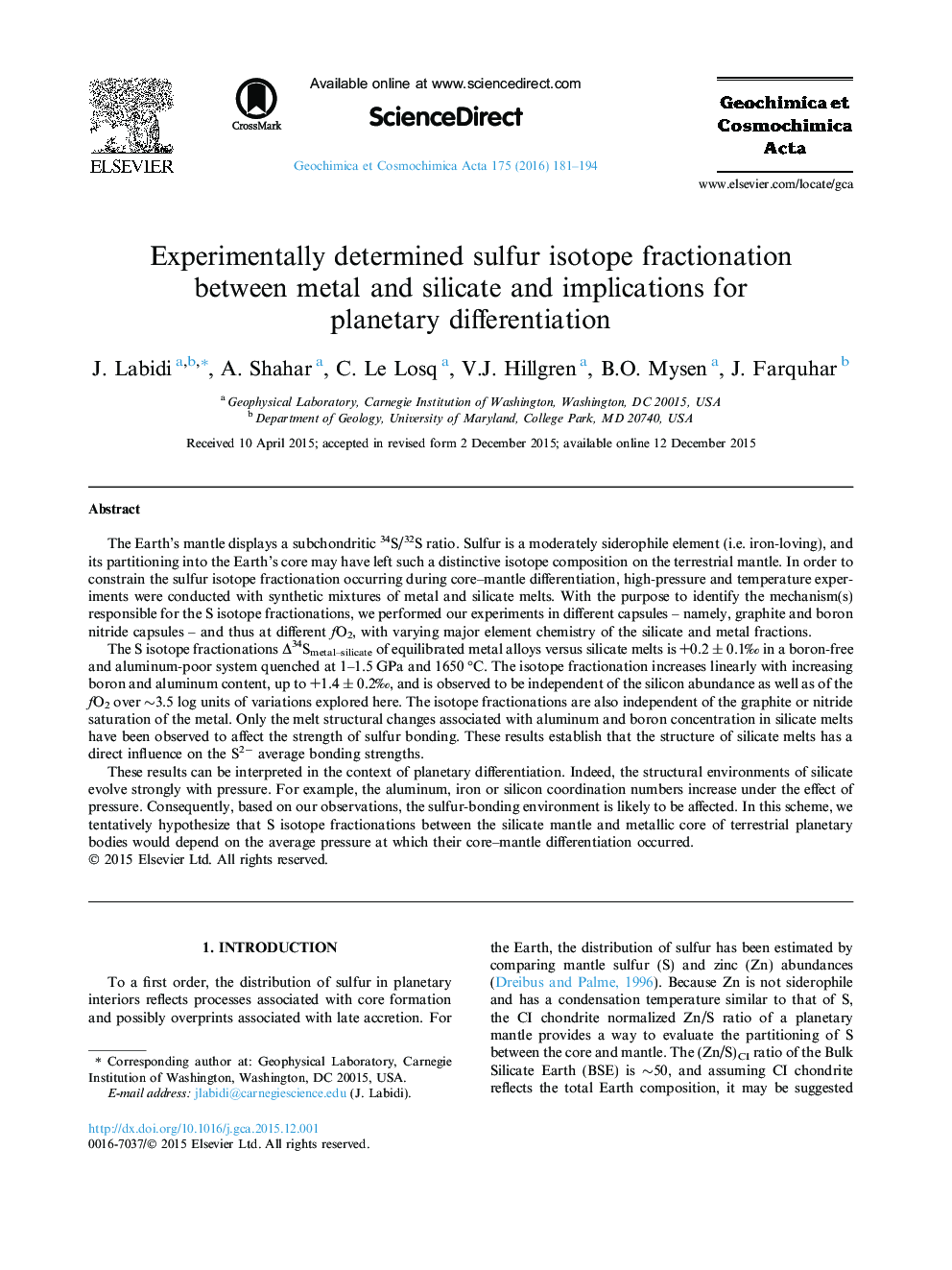| کد مقاله | کد نشریه | سال انتشار | مقاله انگلیسی | نسخه تمام متن |
|---|---|---|---|---|
| 6437467 | 1637982 | 2016 | 14 صفحه PDF | دانلود رایگان |
The Earth's mantle displays a subchondritic 34S/32S ratio. Sulfur is a moderately siderophile element (i.e. iron-loving), and its partitioning into the Earth's core may have left such a distinctive isotope composition on the terrestrial mantle. In order to constrain the sulfur isotope fractionation occurring during core-mantle differentiation, high-pressure and temperature experiments were conducted with synthetic mixtures of metal and silicate melts. With the purpose to identify the mechanism(s) responsible for the S isotope fractionations, we performed our experiments in different capsules - namely, graphite and boron nitride capsules - and thus at different fO2, with varying major element chemistry of the silicate and metal fractions.The S isotope fractionations Î34Smetal-silicate of equilibrated metal alloys versus silicate melts is +0.2 ± 0.1â° in a boron-free and aluminum-poor system quenched at 1-1.5 GPa and 1650 °C. The isotope fractionation increases linearly with increasing boron and aluminum content, up to +1.4 ± 0.2â°, and is observed to be independent of the silicon abundance as well as of the fO2 over â¼3.5 log units of variations explored here. The isotope fractionations are also independent of the graphite or nitride saturation of the metal. Only the melt structural changes associated with aluminum and boron concentration in silicate melts have been observed to affect the strength of sulfur bonding. These results establish that the structure of silicate melts has a direct influence on the S2â average bonding strengths.These results can be interpreted in the context of planetary differentiation. Indeed, the structural environments of silicate evolve strongly with pressure. For example, the aluminum, iron or silicon coordination numbers increase under the effect of pressure. Consequently, based on our observations, the sulfur-bonding environment is likely to be affected. In this scheme, we tentatively hypothesize that S isotope fractionations between the silicate mantle and metallic core of terrestrial planetary bodies would depend on the average pressure at which their core-mantle differentiation occurred.
Journal: Geochimica et Cosmochimica Acta - Volume 175, 15 February 2016, Pages 181-194
